There is an air of optimism in certain quarters of the city, and hidden behind the dull façade of an old metropolis worn out by time and neglect, there are young entrepreneurs investing heavily in high end pubs, restaurants, and bars. The interior décor alone will have cost a fortune, and the large space they have rented suggests they foresee a good future. Among these investors are some well-educated Nepalis, and in their establishments almost all of their staff is Nepali, as well.
Outside, the busy streets are teeming with two kinds of three-wheelers: one spewing toxic diesel fumes, and the other, nothing at all; they are electric. There is a plan to replace the diesel three-wheelers with vans that are not as polluting. The streets look dirty, but it’s difficult to pinpoint where the blame lies; is it the diesel fumes, or is the city just dirty? There is a constant cacophony of honks blaring, but it bothers no one. This is Siliguri (400 ft), the second largest city in West Bengal, with a recorded population of more than 1.05 million people in the metropolis (census 2011). There is an incomprehensible disconnect between the chaotic streets of ‘Sila’ and the proliferating, fancy watering holes that have sprung up recently. But, eight pub owners in a single mall can’t be wrong!
City of Migrants
Siliguri, long known as a ‘city of migrants’, was once a small village before independence (1947), which grew rapidly with the migration of people from neighboring countries and the surrounding rural areas. The most  noticeable of these were the Bangladeshi refugees who escaped the killings when their homeland, East Pakistan, became Bangladesh in 1971. Siliguri has never been a tourist attraction; it’s a place for businessmen and an escape from the freezing cold of Darjeeling for the hill folks. A large number of hill people have apartments in the city. Yes, the weather is pleasant throughout winter and although much of the cross border Terai is engulfed in fog during the cold season, Siliguri thrives on consistently sunny days and sometimes the sky is stunningly clear; so clear that you can see the edge of Kurseong (45 km from Siliguri) high on a hill that overlooks the plains. But come summer and the oppressive heat turns visitors off. So, if you want to visit, winter is the best time (November to February).
noticeable of these were the Bangladeshi refugees who escaped the killings when their homeland, East Pakistan, became Bangladesh in 1971. Siliguri has never been a tourist attraction; it’s a place for businessmen and an escape from the freezing cold of Darjeeling for the hill folks. A large number of hill people have apartments in the city. Yes, the weather is pleasant throughout winter and although much of the cross border Terai is engulfed in fog during the cold season, Siliguri thrives on consistently sunny days and sometimes the sky is stunningly clear; so clear that you can see the edge of Kurseong (45 km from Siliguri) high on a hill that overlooks the plains. But come summer and the oppressive heat turns visitors off. So, if you want to visit, winter is the best time (November to February).
Gateway to the North East
Siliguri is a true ‘junction’, as the railway station has always been known as. The loud-voiced bus conductors shout, “Junction! Junction!” permeating the incessant honking as they approach the station along the old Hill Cart Road which extends all the way to Darjeeling, 77 km away. The bus terminus near the station is named after Tenzing Norgay, the hero of Everest. Here lies the Great Crossroads, where people going to Nepal, Bhutan, Sikkim, Darjeeling, the Dooars, Jalpaiguri, Bangladesh, and the far eastern states of Assam, Meghalaya, Mizoram, etc. cross paths. Kakarvita is 29 km away, Phuentsholing in Bhutan is 157 km, Gangtok is 115 km, Guwahati in Assam is 526 km, while Kolkata is 558 km away. Given its importance, one would have expected Siliguri to morph into a giant, sprawling city with skyscrapers reaching for the sky. Somehow, timely development has eluded it, and the city has remained dusty and unattractive, with little industrialization.
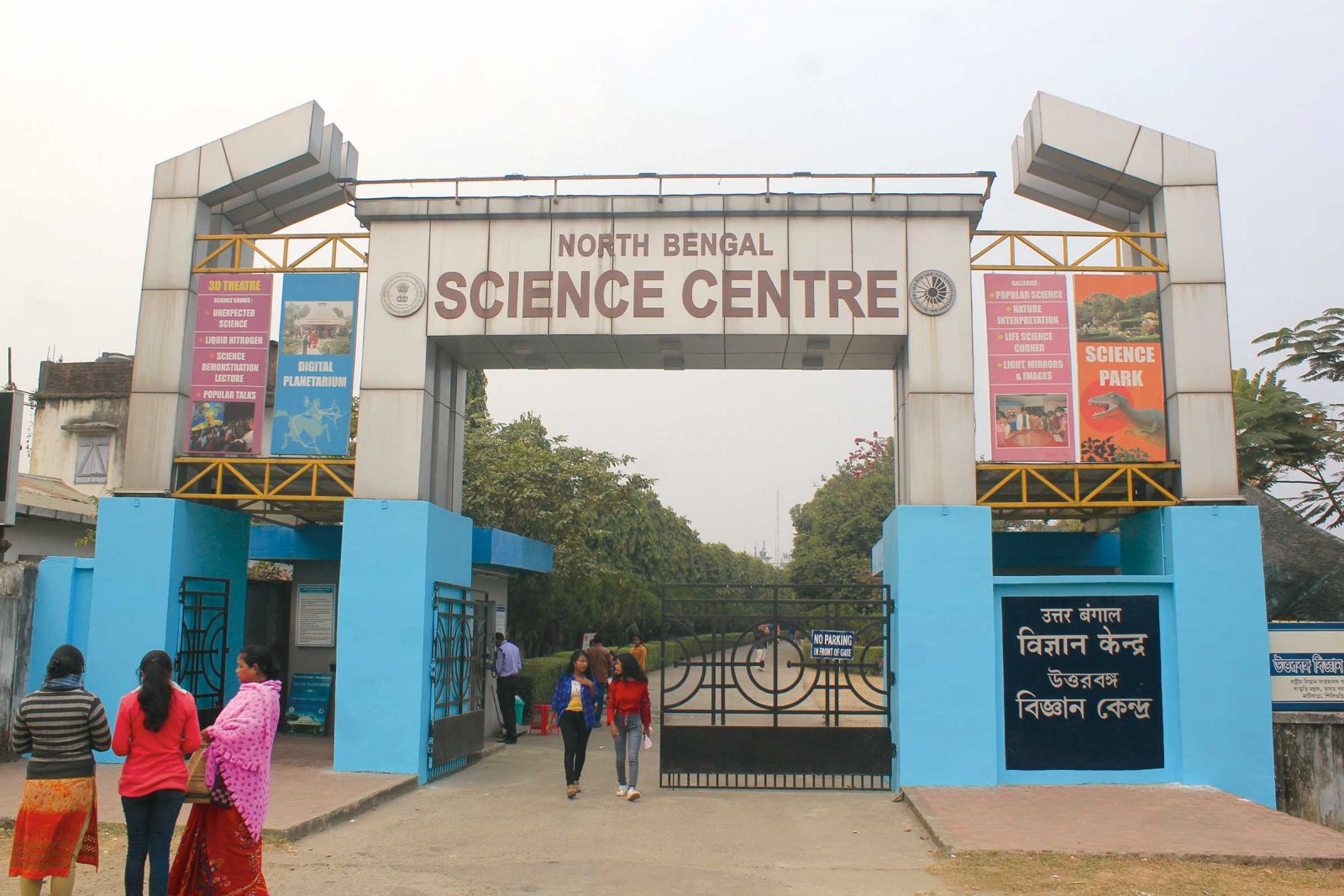 Changing Times
Changing Times
But wait, Sevoke Road is modernizing at a rapid pace never seen before, with fancy buildings housing branded shops that boast large showroom windows brandishing names like Van Heusen, Louis Philippe, Benetton, and others. Is Siliguri on the brink of a makeover? There is hope yet! It already has some luxury hotels like Sinclair’s, Royal Sarovar, Lemon Tree, and Montana Vista, to name a few; superb, glittering shopping malls and a modern hospital with state-of-the-art facilities in Neotia Getwel Healthcare Centre. And, with Marriott opening a multi-storied Hotel Courtyard on Hill Cart Road, something is definitely brewing. Give it time, and Siliguri might just transform itself into a lively place to hang out. Young people are already seen in swanky venues, spending their free time with their partners or friends.
Sevoke Road apparently is the epicenter of this growth and where the action is quickly shifting: fancy restaurants, pubs, and bars are popping up all over the place, and during weekends, they have live music or DJs to entertain their customers. Yes, in Planet Mall alone there is The Tribe, Worth the Hype, The Swedish, Walker’s, Half full, Fluid, Hi 5, Hashtag, etc. Malls are filling this seemingly endless street: Cosmos, City Mall, Planet Mall, Vega Mall, PBR Tower, and more. Along this street you will also find KFC, Pizza Hut, Domino’s, Damro Furniture, and more. But, as a crowd puller, nothing can beat City Centre on the outskirts of the city (along the highway to Nepal) which has its own KFC, Pizza Hut, Domino’s, Hi Spirits, Gourmet Central, Beer Republic, cinema hall, and hundreds of stores; loud dance music can be heard late into the night. It also keeps the kids happy with toy train rides, bus rides, kiddy’s bikes and cars, wall climbing, swing, etc. This is a massive shopping mall with several separate buildings catering to thousands of shoppers. Most youngsters these days are seen hanging around these malls, which no doubt helps boost the economy.
Places to see
For a long, long time, Siliguri offered nothing to visitors, but that too is changing fast. Further up from Salugada, there is the Bengal Safari just off the Kalimpong/Sikkim Highway. Visitors are given a choice of taking an elephant ride or a bus safari to see wildlife that includes the Royal Bengal tiger. Or, you can just visit the zoo within the compound, which houses disappointingly few animals, and an aviary full of exotic birds like storks, peacocks, parrots, and more; there is room for improvement. Before reaching Bengal Safari, one can stop at Salugada’s Tashi Gomang Stupa, a Buddhist monastery, which also is conveniently by the highway. For those with time on their hands, there is the Mahananda Wildlife Sanctuary, a 30-minute drive from the city. The sanctuary covers 159 sq km and lies between the Teesta and Mahananda Rivers. Off the Sevoke Road, along a lane, is the beautiful Iskcon Temple (dedicated to Lord Krishna). At the other end of Siliguri, along the  Darjeeling Highway is the Savin Kingdom (amusement park and water world for kids) in Dagapur not far from Darjeeling More. Then, close to City Centre, along the road to Kakarvita, one will find the interesting Science Centre. It has on display some very intriguing science facts, and at scheduled times there are special shows at the Digital Planetarium and Taramandal. They take you across the universe as you gaze up in awe at the images of galaxies and black holes on the dome. All these interesting sites have one thing in common; they are all on the outskirts of Siliguri, and only the malls and one park lie within the city. The conveniently located Surya Sen Park hugs the banks of the Mahananda River and is within walking distance from the bridge. One of its main attractions is the impressive toy train, large enough to accommodate more than fifty people, and big enough for adults.
Darjeeling Highway is the Savin Kingdom (amusement park and water world for kids) in Dagapur not far from Darjeeling More. Then, close to City Centre, along the road to Kakarvita, one will find the interesting Science Centre. It has on display some very intriguing science facts, and at scheduled times there are special shows at the Digital Planetarium and Taramandal. They take you across the universe as you gaze up in awe at the images of galaxies and black holes on the dome. All these interesting sites have one thing in common; they are all on the outskirts of Siliguri, and only the malls and one park lie within the city. The conveniently located Surya Sen Park hugs the banks of the Mahananda River and is within walking distance from the bridge. One of its main attractions is the impressive toy train, large enough to accommodate more than fifty people, and big enough for adults.
Although there are many places to visit, Savin Kingdom and Bengal Safari can’t possibly become your hangouts. There is no Park Street or Connaught Place, nor an MG Road or Durbar Marg here. So, where does one go for a good time? The shopping malls are the salvation, and these places are always full of Nepali people. It may sound far-fetched, but if Nepalis were to stop patronizing these malls, their earnings would plummet dramatically, as was proven during the 104-day strike over the demand for Gorkhaland. When it comes to shopping and eating out, you can’t beat the Nepalis. And there are so many Nepalis in Siliguri that most people here can speak the Nepali language fluently. Speak to a Bengali/Marwari trader for five minutes in Hindi, and he’ll eventually switch to Nepali, provided you look Nepali.
Nepalis of Siliguri
Many generations of Nepalis have lived here. There is a Pradhan Nagar and Gurung Nagar (formerly Busty), but today Nepalis live in every corner of Siliguri. And with the menace of the Maoist movement in Nepal, many Nepali citizens have only recently emigrated and settled down on the outskirts of the city, just an hour’s drive from Kakarvita. As a Darjeeling-born retired army officer living here recently informed me, “They’ve built a gate here that’s exactly like the ones in Nepal.” Siliguri falls within Darjeeling District under West Bengal, which may soon be called just ‘Bengal’ if Mamta Bannerjee, the chief minister, can have her way. She has a point though; starting with ‘W’, her state is always at the bottom of any list, as there’s no state name starting with X, Y, and Z.
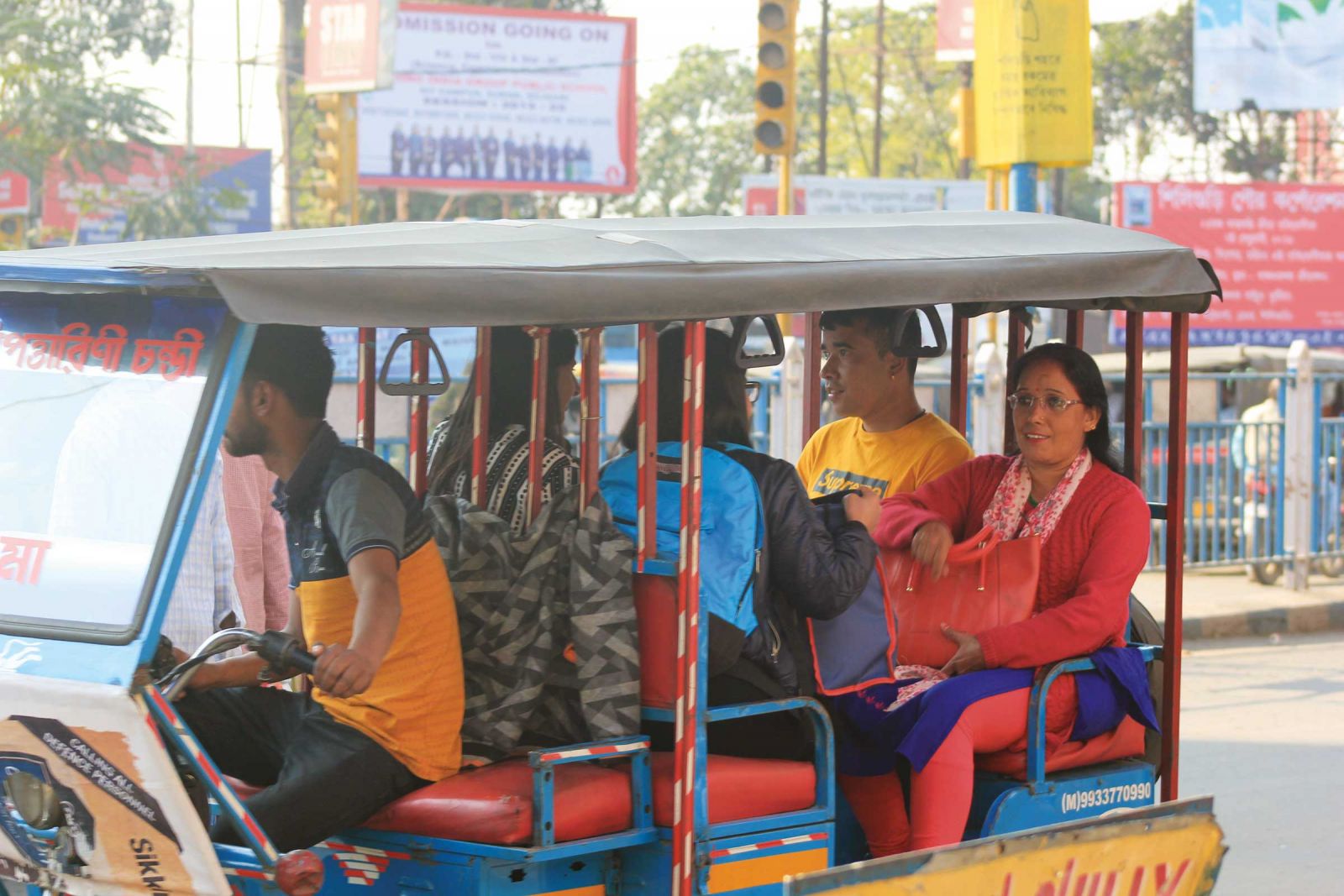 Nepalis have been living in all corners of India for as long as anyone can remember. Brought to Darjeeling when the tea plantations were established by the British in the 1800s, they eventually became Indian citizens. Others joined the British Army and many never returned to Nepal. After India’s independence, the Gorkha (Gurkha) forces became part of the Indian Army serving in the Gorkha Regiment and Assam Rifles, with postings from Ladakh and Assam to the far south. Today, the generations of Nepalis born here feel they are Indians, although their Nepali heritage and culture remain intact. Yes, they will root for the Indian cricket team and know the Indian national anthem by heart, but they celebrate Dashain, Tihar, and Teej, and deep in their hearts, Adrian Pradhan’s (1974 AD) song “Nepali Ho” (We are Nepali) says it all.
Nepalis have been living in all corners of India for as long as anyone can remember. Brought to Darjeeling when the tea plantations were established by the British in the 1800s, they eventually became Indian citizens. Others joined the British Army and many never returned to Nepal. After India’s independence, the Gorkha (Gurkha) forces became part of the Indian Army serving in the Gorkha Regiment and Assam Rifles, with postings from Ladakh and Assam to the far south. Today, the generations of Nepalis born here feel they are Indians, although their Nepali heritage and culture remain intact. Yes, they will root for the Indian cricket team and know the Indian national anthem by heart, but they celebrate Dashain, Tihar, and Teej, and deep in their hearts, Adrian Pradhan’s (1974 AD) song “Nepali Ho” (We are Nepali) says it all.
The Nepali people in Siliguri are doing well for themselves. Besides the businessmen, who are obviously well off, a large number of working class Nepalis have found employment, especially in the shopping malls and hospitals, where they seem to dominate as sales persons and nurses, respectively. Another common sight here is Nepali men and women in police uniform. Some entrepreneurs have opened branches of their well-established eateries in Darjeeling like Soaltee Momos. Yes, their momos are tasty, too. You find Nepalis employed in hotels, restaurants and bars, shops, housing complexes, offices, the police force, and if you walk about the city, half the people seem to be Nepali, and given the fact that many don’t even look Nepali, there’s more than you might think! In Siliguri today, you can’t walk anywhere without bumping into a Nepali.
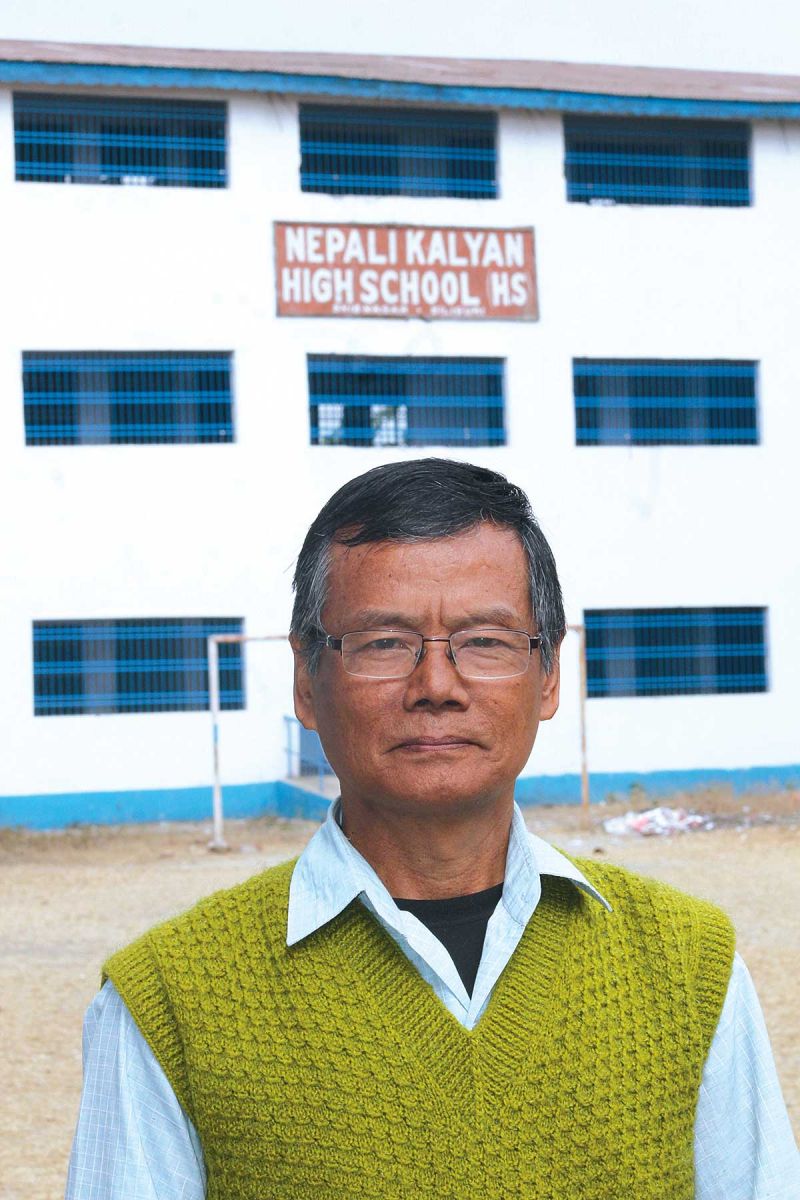 Nepalis living in the city of migrants
Nepalis living in the city of migrants
Dhan Bahadur Rai was appointed Head Master of the Nepali Kalyan High School in Shiv Nagar, Siliguri, in Jan 2000. Born in a Cinchona plantation in Latpancher near Kurseong, he was educated in Turnbull High School, Darjeeling. Rai later graduated from Government College and completed his B. Ed from the government-run Ram Krishna B. Ed. College. He spent 14 years in the Krishna Maya Nepali High School before moving to Nepali Kalyan. The co-ed school has grown big, with impressive, spotless white buildings, and currently has 485 students. At 58, Rai lives in Shastri Nagar with his wife and son, while his daughter is pursuing her studies in Dehra Dun.

Rubina Chhetri was born in Kalimpong and educated in Namchi, South Sikkim, where she passed her CBSE (Class X) from New Light Academy and did her I.Sc. from Rockvale Academy in Kalimpong. She went on to undergo training at the Asha Niketan, School of Nursing, in Bhopal, Madhya Pradesh, completing her G.N.M. in 2018. Rubina joined Neotia Getwel Healthcare Centre in November 2018 and lives in Uttarayon with two of her friends from school. Leaving her parents back in Sikkim, she is now a junior staff nurse at Neotia and is posted in Emergency. An only child, at 22, she has joined countless other young people from the hills who left home to work in Siliguri.
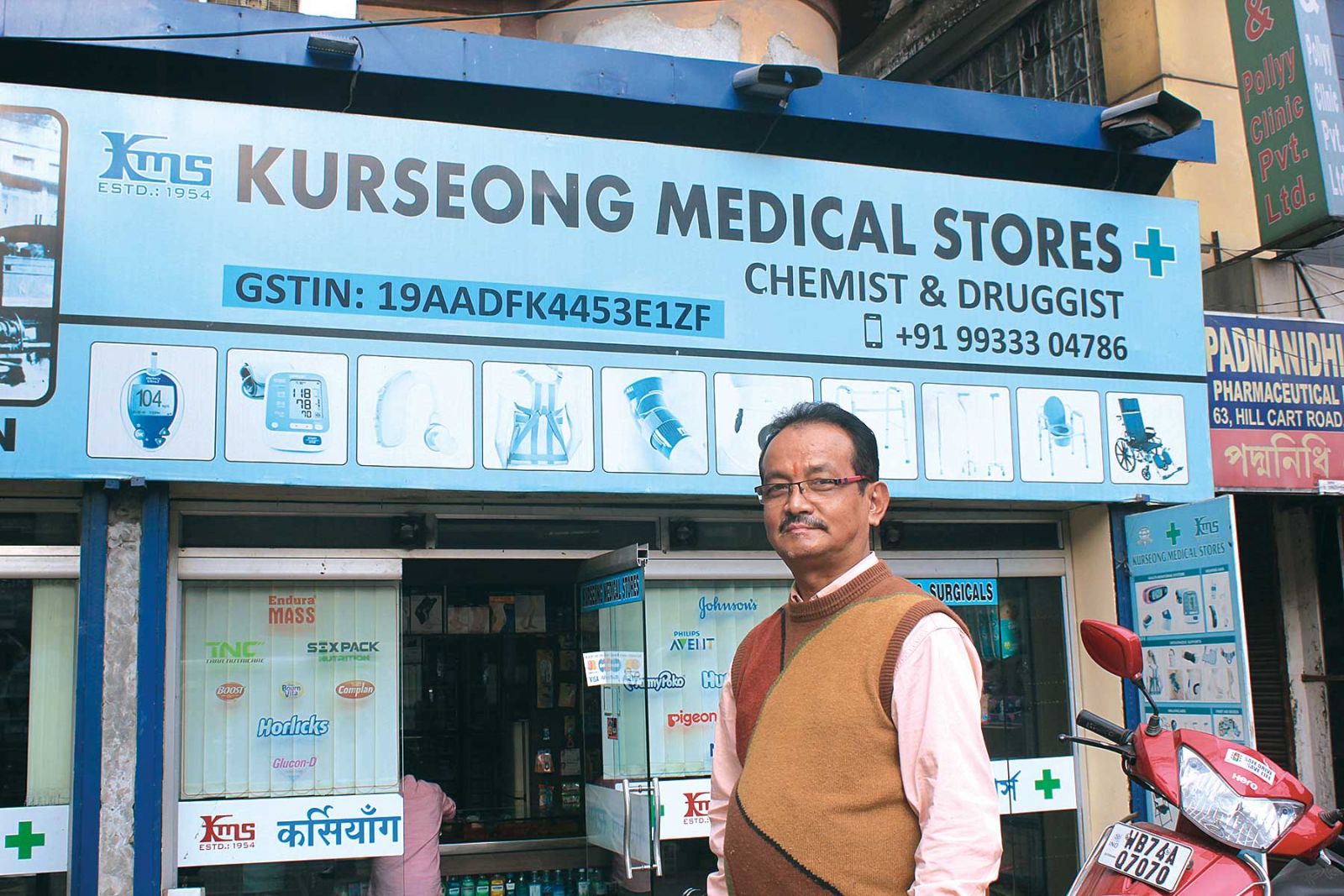 Arjun Gurung is a senior salesman at Kurseong Medical Stores in Hill Cart Road. Born and brought up in Norbung Tea Estate, Kurseong, he attended the Teen Dharia Boys High School. In 1976, he ventured all the way to Kathmandu and found a job at the Mechi Chiya Udhyog in Ram Shah Path, where he lived with the owner’s family. But, six months later, he quit the job and returned home. By 1978, he had found his way down to Siliguri, where he was hired by Kurseong Medical Stores the following year. He has spent the last forty years at the pharmacy. He lives with his wife, two sons, and two grandsons at Champasari, while his daughter, son-in-law, and grand-daughter live separately.
Arjun Gurung is a senior salesman at Kurseong Medical Stores in Hill Cart Road. Born and brought up in Norbung Tea Estate, Kurseong, he attended the Teen Dharia Boys High School. In 1976, he ventured all the way to Kathmandu and found a job at the Mechi Chiya Udhyog in Ram Shah Path, where he lived with the owner’s family. But, six months later, he quit the job and returned home. By 1978, he had found his way down to Siliguri, where he was hired by Kurseong Medical Stores the following year. He has spent the last forty years at the pharmacy. He lives with his wife, two sons, and two grandsons at Champasari, while his daughter, son-in-law, and grand-daughter live separately.
Suman Tamang opened Steamy Moktu, a multi-cuisine restaurant off Sevoke Road, about 100 m down the  Udhan Singh Sarani. He was born and brought up in Darjeeling and passed out from St. Joseph’s, North Point, in 1999. After school, he took distance courses in B.Com and followed up with an eleven-year stint as a banker, working for HSBC in Bangalore and Kolkata. For two years afterwards, between 2015 and 2016, he ran a restaurant named 18 James Long in Behala, Kolkata. Then, in May 2017, he came to Siliguri and opened Steamy Moktu in Ashram Pada. Thirty-six-year-old Suman lives on his own near Don Bosco.
Udhan Singh Sarani. He was born and brought up in Darjeeling and passed out from St. Joseph’s, North Point, in 1999. After school, he took distance courses in B.Com and followed up with an eleven-year stint as a banker, working for HSBC in Bangalore and Kolkata. For two years afterwards, between 2015 and 2016, he ran a restaurant named 18 James Long in Behala, Kolkata. Then, in May 2017, he came to Siliguri and opened Steamy Moktu in Ashram Pada. Thirty-six-year-old Suman lives on his own near Don Bosco.
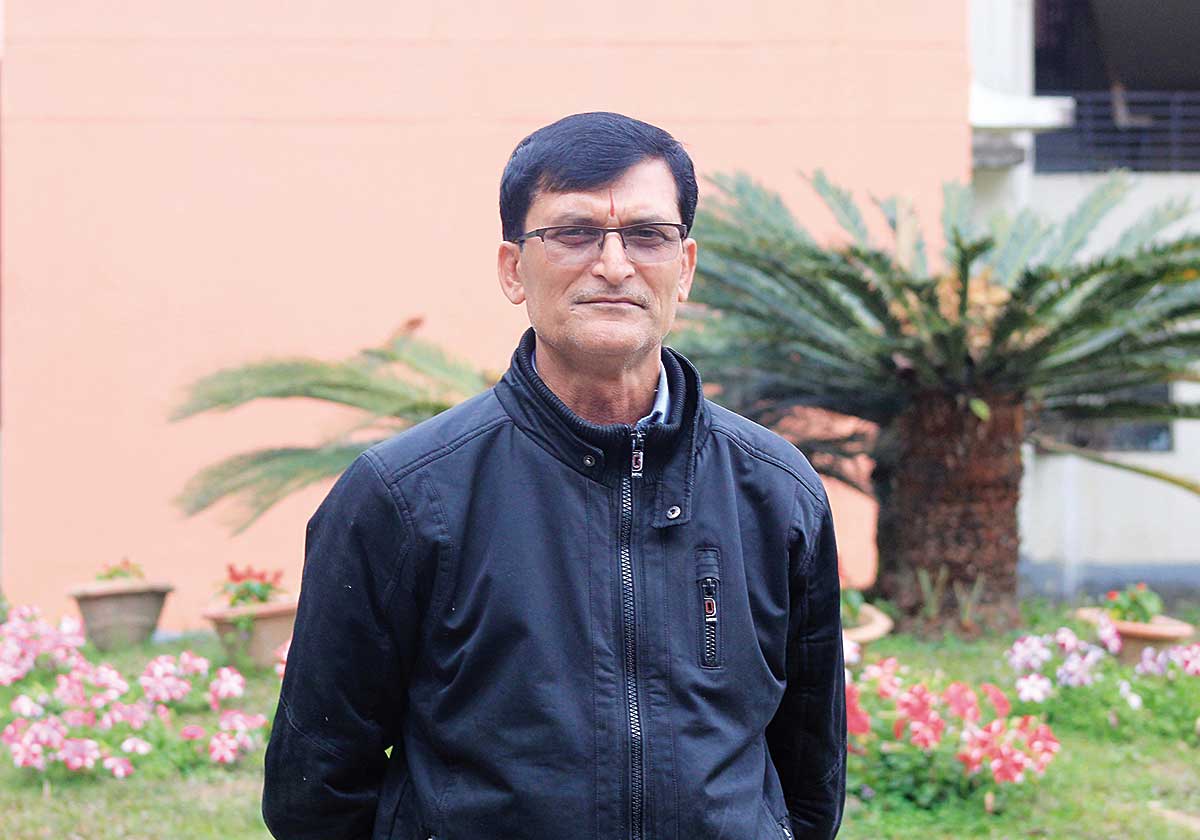 Places to eat: Siliguri’s diverse restaurants are growing. For Chinese, Taiwah Chinese Restaurant, Little China (both in Hill Cart Road), and even Hi Spirits (City Center) serves good Chinese food. For biryani, go to Zaika, Biryani House, (off Burdwan Road), for momos, there’s Soaltee (Don Bosco More) and Momo Hub (City Center), for typical Bengali fare, try Bhojohori Manna (Hill Cart Road), and for a historic place, visit 65-year-old Netaji Cabin that’s famous for half-boiled/quarter-boiled eggs, toast, and coffee (Bidhan Market). There are KFCs in City Centre, Vega Mall, and Sevoke Road, Pizza Huts in City Centre and Cosmos Mall, Domino’s Pizzas in Cosmos Mall, Vega Mall, City Centre, and Ojas Mall.
Places to eat: Siliguri’s diverse restaurants are growing. For Chinese, Taiwah Chinese Restaurant, Little China (both in Hill Cart Road), and even Hi Spirits (City Center) serves good Chinese food. For biryani, go to Zaika, Biryani House, (off Burdwan Road), for momos, there’s Soaltee (Don Bosco More) and Momo Hub (City Center), for typical Bengali fare, try Bhojohori Manna (Hill Cart Road), and for a historic place, visit 65-year-old Netaji Cabin that’s famous for half-boiled/quarter-boiled eggs, toast, and coffee (Bidhan Market). There are KFCs in City Centre, Vega Mall, and Sevoke Road, Pizza Huts in City Centre and Cosmos Mall, Domino’s Pizzas in Cosmos Mall, Vega Mall, City Centre, and Ojas Mall.
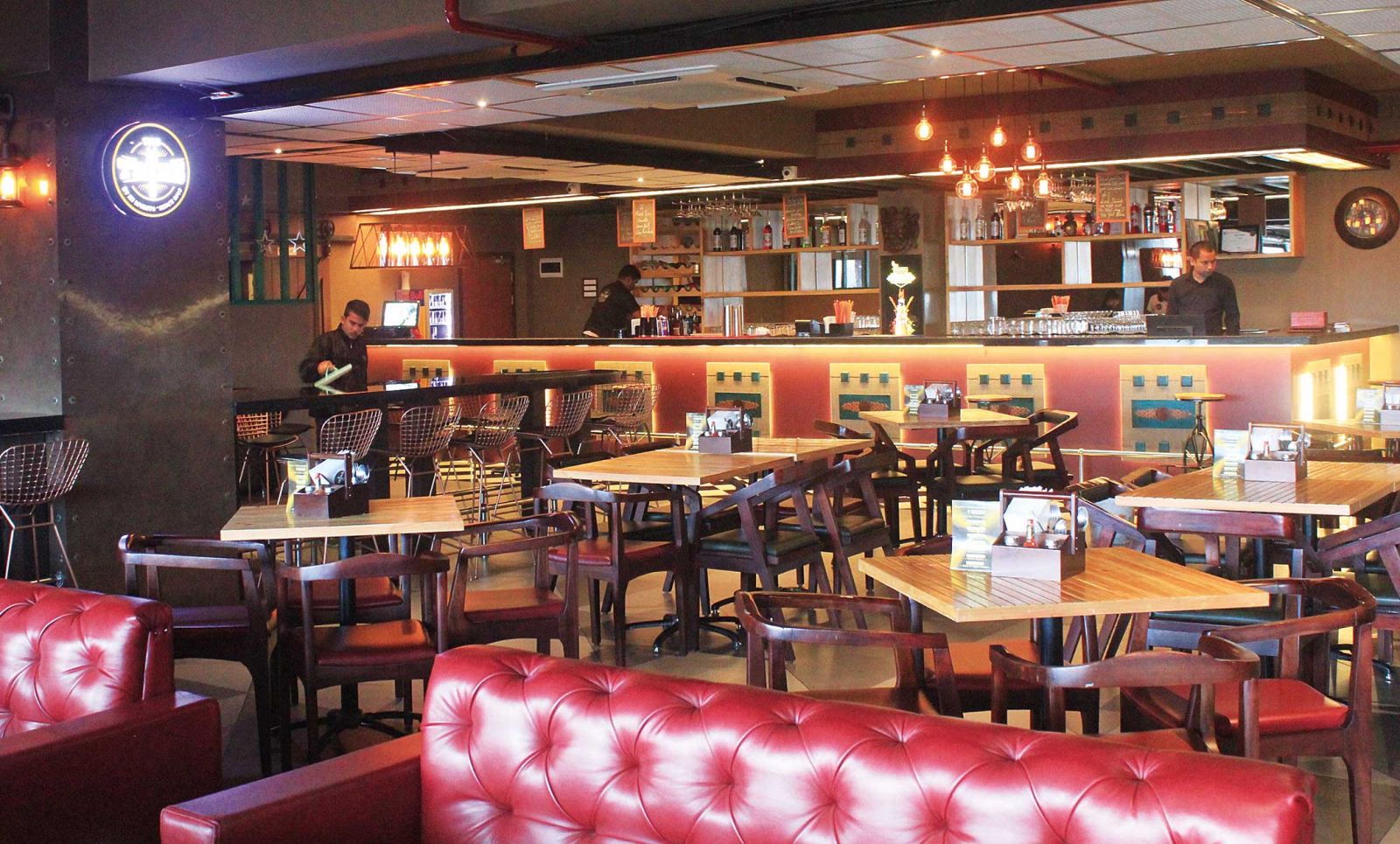 Getting There: Catch a flight to Chandragadi Airport (better known as Bhadrapur Airport) from Kathmandu, reserve a car or van from the car park to Kakarvita, and get yet another vehicle to take you to Siliguri from there. Or, hop on a three-wheeler to cross the border, and catch the Panitangki-Siliguri bus (IRs 30/-). You can also take a day or night bus (preferably an AC bus for comfort) from Kathmandu. The other alternative is one of the smaller vehicles that take the new route via Bardibas along
Getting There: Catch a flight to Chandragadi Airport (better known as Bhadrapur Airport) from Kathmandu, reserve a car or van from the car park to Kakarvita, and get yet another vehicle to take you to Siliguri from there. Or, hop on a three-wheeler to cross the border, and catch the Panitangki-Siliguri bus (IRs 30/-). You can also take a day or night bus (preferably an AC bus for comfort) from Kathmandu. The other alternative is one of the smaller vehicles that take the new route via Bardibas along 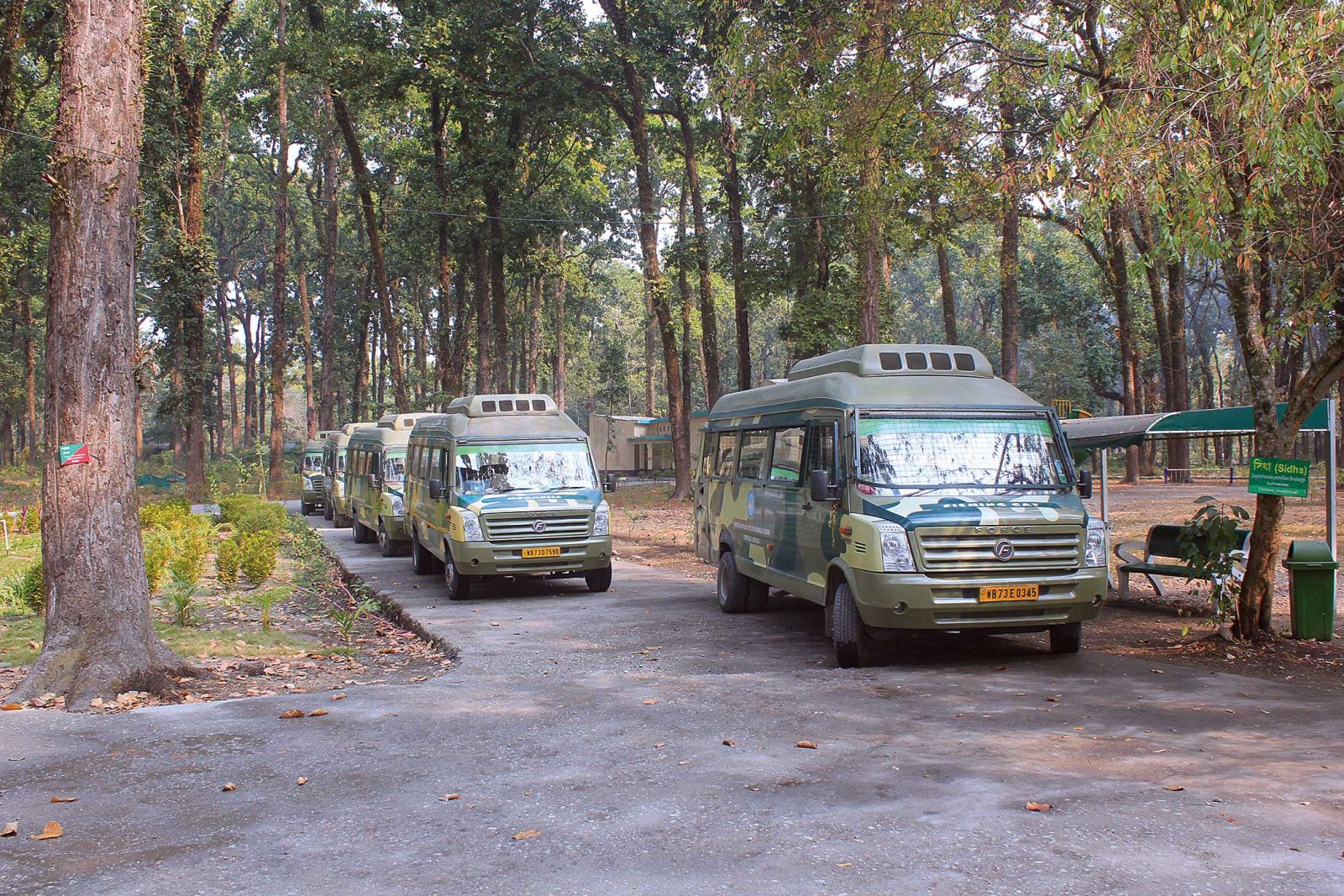 the B.P. Highway. All these vehicles drop you off at Kakarvita. Siliguri is an hour’s ride away. The nearest airport is at Bagdogra, but unfortunately, there are no direct flights from Nepal. But, you can fly to other major Indian cities, and even Bangkok, from Bagdogra Airport.
the B.P. Highway. All these vehicles drop you off at Kakarvita. Siliguri is an hour’s ride away. The nearest airport is at Bagdogra, but unfortunately, there are no direct flights from Nepal. But, you can fly to other major Indian cities, and even Bangkok, from Bagdogra Airport.
Side Trips from Siliguri: Visit Darjeeling, Kalimpong, Sikkim, or Bhutan while you’re in Siliguri. The Jaldapara National Park can be added to your itinerary.











